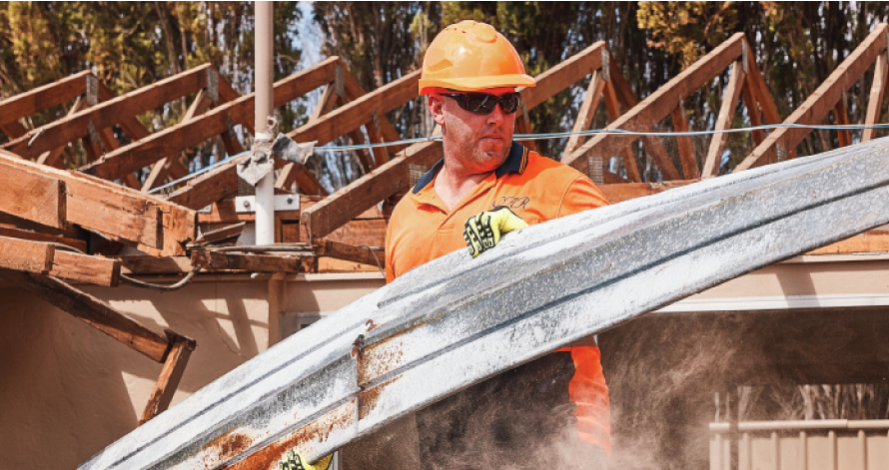Skin cancers account for around 80% of all newly diagnosed cancers and between 95-99% of skin cancers are caused by exposure to the sun. Scientists now believe that both UVA and UVB rays damage skin and cause skin cancer.
The best protection against cancer causing UV rays is to stay out of the sun. That’s pretty well impossible on most work sites, so the next best thing is to slip on a long sleeved shirt, slop on the PROBLOC®, slap on a wide brim hat and slide on some safety sunglasses.
ACCORDING TO SUNSMART, AT LEAST TWO IN THREE AUSTRALIANS WILL BE DIAGNOSED WITH SKIN CANCER BY THE AGE OF 70. *Cancer Council of Australia July 2012
However, by taking sensible precautions, skin cancer is the most preventable form of cancer in Australia and New Zealand. Some skin cancers can also be cured if detected and treated early. The best way to avoid sun damage is to avoid the sun where possible, cover up and where necessary, use a SPF 50+ sunscreen, such as PROBLOC®. At Pro Choice Safety Gear we are always looking for ways to take the hassle out of sun protection – check out our lip balms and convenient workplace sized dispensers, which complement our range of hats, shields and UV shielding eye wear.
We’re Nanoparticle Free!
Nanoparticles are used in some sunscreens and cosmetics to help promote a transparent finish after application. In 2008, nanoparticles were cited as a major factor causing premature weathering of prepainted steel roof sheets. The steel roof sheets had been handled by workers who had sunscreen (containing nanoparticles) residue left on their hands after application. Nanoparticles have also been shown to cause deterioration of surface coatings and paints on cars and other products. The jury is still out in relation to the effect nanoparticles on human skin, however incidents like the one in 2008 does cast a question mark over their safety. All PROBLOC® sunscreen is nanoparticle free and is safe to use on human skin in accordance with Australian and New Zealand Standards.
What does SPF mean?
Sun Protection Factor - According to the Cancer Council, two out of three people will develop some form of skin cancer during their lifetime in Australia and New Zealand. The best way to protect skin from the sun is by use of clothing and shade, however, when you’re outside for work this isn’t always possible. Any remaining exposed skin should be protected by sun protection factor (SPF) SPF 50+. The purpose of using sunscreen is to reduce Ultra Violet Rays (UVR) exposure, not to extend the time you can spend outside in the sun. The SPF rating indicates the level of protection provided by a sunscreen against UVR. Sunscreens sold in Australia must be labelled with an SPF rating of at least 4, up to a maximum of 50+. Sunscreens of less than SPF 15 offer only moderate to low protection. All of our sunscreen complies with Australian and New Zealand. Standards - AS/NZS 2604:2012
Is PROBLOC® a chemical absorber or a physical blocker sunscreen?
PROBLOC® is a chemical absorber sunscreen and absorbs UVR in a chemical barrier. The individual chemicals in this form of sunscreen absorb UVR at specific wavelengths. Broad spectrum sunscreens contain several ingredients that each absorb at different wavelengths and so are effective over more of the UVR spectrum. PROBLOC® sunscreen is water resistant for up to 4 hours, dry touch, PABA free and very easy to apply to the skin. It also contains Vitamin E which nourishes your skin.
How should you apply sunscreen?
Sunscreen is best applied to clean, dry skin. Sunscreen must be applied at least 15 minutes before going outside to all exposed areas of skin and reapplied every two hours to maintain the stated protection. Reapplication does not give additional protection. Application of sunscreen ineffectively or too sparingly may considerably reduce the level of protection for the wearer. Remember that sunscreens do not block out all of the UVR so a person is not completely protected by sunscreen and may still sunburn.
How much sunscreen should you use?
According to the Cancer Foundation, the effectiveness of sunscreens is dependent upon many factors including how thickly the sunscreen is applied to the exposed skin. It is internationally accepted that the application should be about two milligrams per square centimetre. This translates to about 35 millilitres (ml), which is approximately six teaspoons, of sunscreen to protect the entire exposed skin of an adult male.
FOR EFFECTIVE SUNSCREEN PROTECTION USE 35ML TO COVER WHOLE BODY
5ML - FACE & NECK
5ML - BACK
5ML - CHEST & STOMACH
10ML - LEFT & RIGHT ARM
10ML - LEFT & RIGHT LEG

 1800-HEATLEYS
1800-HEATLEYS









